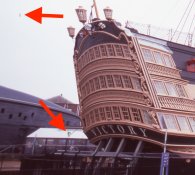Svenedin
Member
I am having problems with blue lines appearing on my scans. I am scanning Fujichrome Velvia 100 (slide film). This film is not mounted as slides but is in film strips and placed in the film holder that came with the scanner.
The film was lab processed by a reputable lab.
I am using Epson Scan and the latest version as updated by the updater software.
I am scanning at 6,400 dpi but altering the resolution has not altered the appearance of the blue lines. I have also tried cleaning the scanner glasses and film holder, trying all of the different heights possible for the film holder, turning digital ICE on and off, 24 bit and 48 bit colour but the problem remains.
Can anyone suggest what is causing this problem? I very rarely scan colour so I am at a loss. Is it a scratch from the lab? I can't see it with a loupe (but I might have better luck in daylight).
In the example photo the blue line is horizontal across the lower part of the photo. This line does not appear on all the frames.

The film was lab processed by a reputable lab.
I am using Epson Scan and the latest version as updated by the updater software.
I am scanning at 6,400 dpi but altering the resolution has not altered the appearance of the blue lines. I have also tried cleaning the scanner glasses and film holder, trying all of the different heights possible for the film holder, turning digital ICE on and off, 24 bit and 48 bit colour but the problem remains.
Can anyone suggest what is causing this problem? I very rarely scan colour so I am at a loss. Is it a scratch from the lab? I can't see it with a loupe (but I might have better luck in daylight).
In the example photo the blue line is horizontal across the lower part of the photo. This line does not appear on all the frames.




